Facial Contouring
Jaw Contouring Surgery

Reduces jaw size while removing fat and muscle to effectively slim the face.
-
OPERATION
TIME1 hour
-
ANESTHESIA
General anesthesia
-
HOSPITALIZATION
1 day
-
STITCH REMOVAL
14 days
-
RETURN TO
NORMAL ACTIVITIES14 days
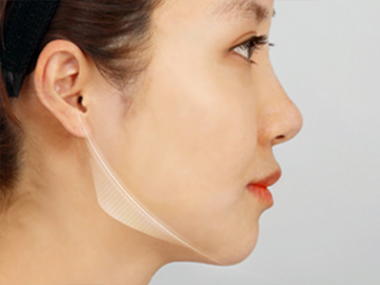
What is Jaw Contouring Surgery?
This is a surgery that reduces the size of the lower jaw area. A square jaw is a condition where the lower jaw grows and forms angular lines, and jaw contouring surgery is the method used to reduce its size.
At Dr.Kung, we use a technique that extends the contouring line to the corner of the mouth to eliminate the angular jaw,
providing a slim effect both from the front and side view. During the surgery, fat is removed, and muscles are reduced, resulting in a visibly slimmer face.
Why Jaw Surgery Helps Create a Youthful Appearance
From the late 20s, the previously slim face begins to age. After 30, the angular features become more prominent.
A wide jaw with angular features adds age to the face. Also, prolonged chewing of food causes tooth wear and jaw muscles to enlarge.
When jaw muscles grow, the supporting bone structure becomes thicker. Therefore, jaw contouring surgery is a suitable method to restore a slimmer appearance as before.
Key Benefits of V-Line Surgery at Dr.Kung
-
Effective from the Front View
The long, continuous contouring line creates a slimmer face when viewed from the front.
-
Effective from the Side View
The long, curved contouring line creates soft, smooth lines with no sharp angles.
-
Reduces Swelling, Increases Elasticity
Special post-operative care program helps reduce swelling and promote quick elasticity.
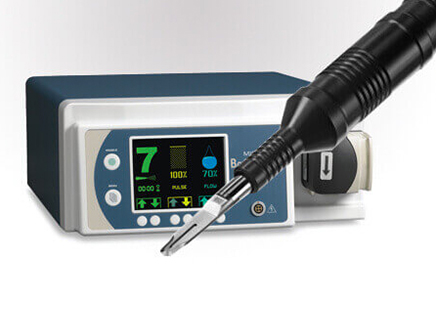
BONE SCALPEL SUPPORTS
HIGHLY ACCURATE AND SAFE SURGERY
The bone scalpel is an ultrasonic bone cutting device that works only on bone.
The vibration is very small, around 0.5mm, allowing for precise surgery. It only reacts to bone, which protects the blood vessels and nerves around it, minimizing tissue damage, bleeding, and promoting quick recovery.
Candidates for Jaw Contouring Surgery at Dr.Kung
-
01.
Cases with large, square, angular jaws
-
02.
Wide face due to bone, muscle, and fat growth
-
03.
Clearly angular jawline when viewed from the side
-
04.
Cases previously treated with Botox but with no effective results
Before & After
Surgery
Jaw Contouring Surgery
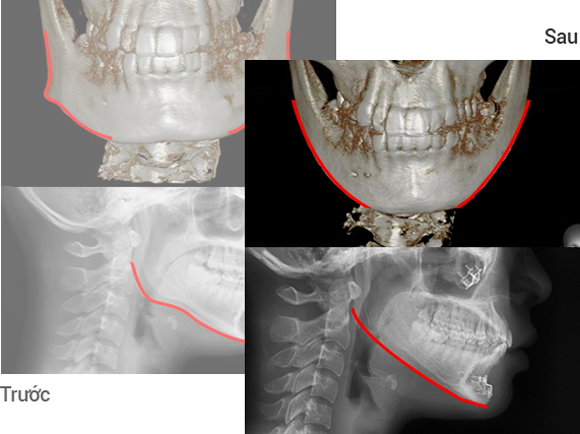
Surgical Methods
-
01.
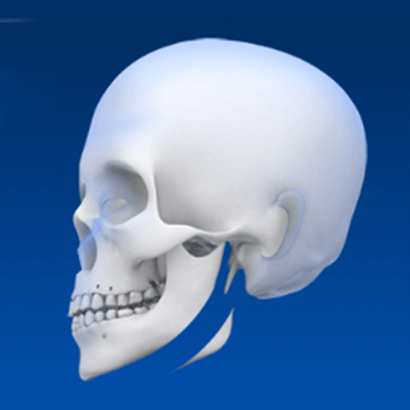 Long Curved Jaw Contouring Surgical Method
Long Curved Jaw Contouring Surgical MethodThe long curved jaw contouring technique involves sculpting from the square jaw under the ear to the front chin. Whether viewed head-on or from the side, the square jaw disappears and the chin line becomes softer. Additionally, this method can also correct significant jaw misalignment.
Type Square Jaw Contouring Long Curved Jaw Contouring Surgical Area Only contours the square jaw under the ear Contours from the square jaw under the ear to the front chin Incision Incision behind the ear, leaving a scar Incision inside the mouth, leaving no visible scar Results Slimming effect when viewed from the side Slimming effect even when viewed front-on or from the side Chin Contour May still have angular lines Soft, smooth lines with no angles -
02.
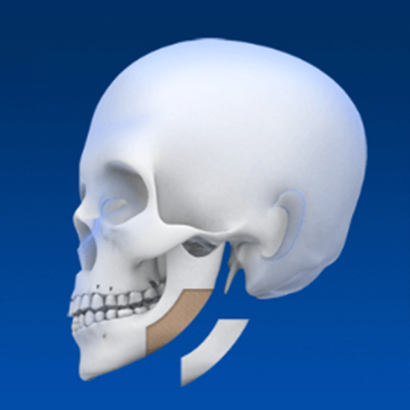 Bone Membrane Dissection What is Bone Membrane?
Bone Membrane Dissection What is Bone Membrane?The bone structure in the human body consists of three layers: bone membrane, compact bone, and trabecular bone. Bone membrane is the outermost layer, and carefully dissecting and trimming this membrane layer helps reduce the thickness of the face.
Surgical MethodBone membrane dissection involves removing an appropriate amount of the outer bone layer, creating a slimming effect. In most cases, about 2mm of bone membrane can be removed, significantly slimming the face when viewed front-on. If both fat and muscle have developed, removing them simultaneously will greatly enhance the effect.
-
03.
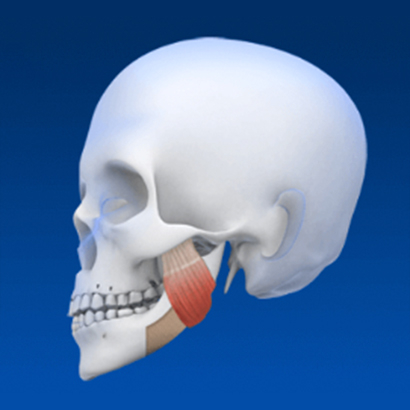 Muscle Reduction Surgical Method
Muscle Reduction Surgical MethodThis method uses a specialized medical needle with high-frequency waves to reduce part of the facial muscles. Instead of shrinking the muscle fibers, the number of muscle cells is minimized. After being removed, these muscle cells will not regenerate, making this muscle reduction method highly effective and long-lasting. Especially when jaw muscles have overdeveloped, the result will be a noticeable slimming effect.
-
04.
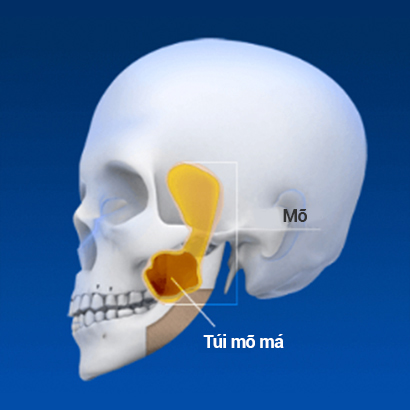 Buccal Fat Removal What is Buccal Fat?
Buccal Fat Removal What is Buccal Fat?When analyzing the side angle of the face, a strip of fat extends from the temple near the eye to the corner of the mouth. In medical terms, this is called "buccal fat," which often accumulates in the lower cheek area, forming a "buccal fat pad." This condition is common in younger individuals, but may persist into adulthood.
Surgical Method The fat is removed from inside the mouth. Excessive fat removal can damage nerves or salivary glands, and may cause hollowness in the cheeks. Therefore, accurate surgical positioning is essential, and with experienced techniques, around 4~5cc of buccal fat can be safely removed.
Reasons Why Dr.Kung's Jaw Surgery is Highly Considered
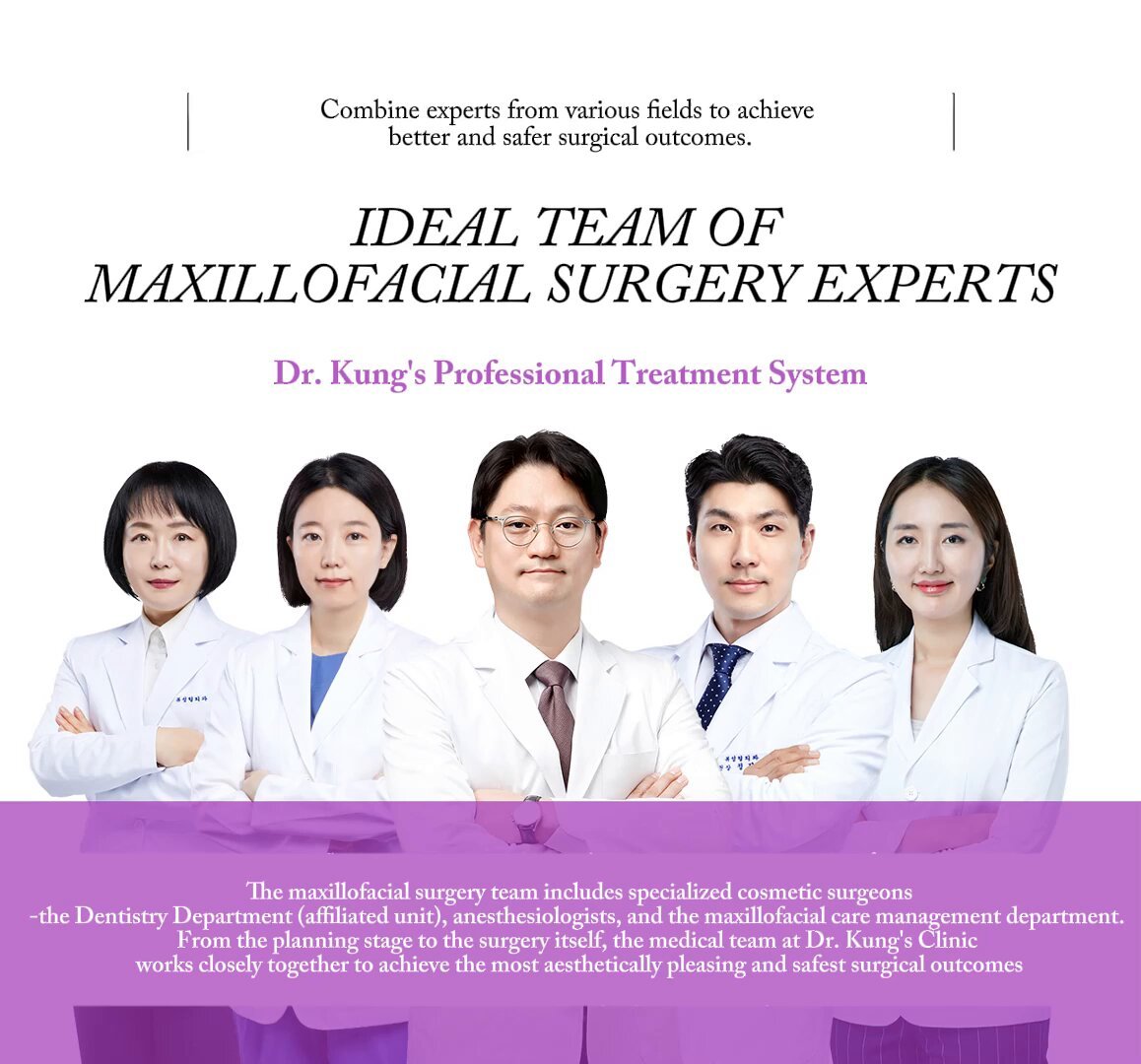
-
Satisfactory Results
A combination of specialists from various fields,
Direct consultation with the doctor performing the surgery -
Absolute Safety
Anesthesia specialists are on duty continuously
from surgery planning to post-surgery recovery
Including defibrillators and UPS systems for power backup -
Special Post-Surgery Care
Special care for swelling and skin care
specifically designed for jaw surgery recovery
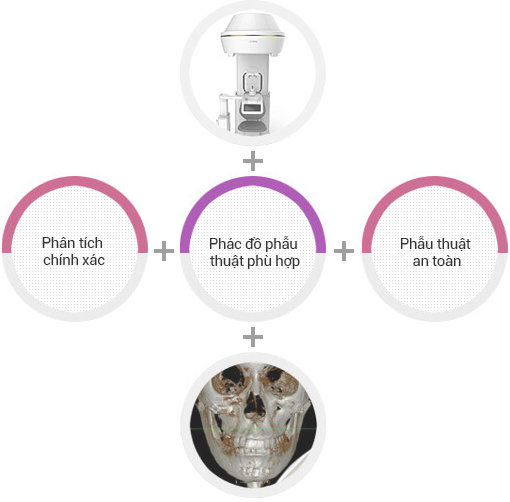
3D CT is an X-ray scanning machine connected to a computer that can measure internal body structures, providing 3D video images.
Unlike standard X-ray images, it provides more than 3000 times the accuracy, allowing precise analysis of the size, depth, length, and width of the facial bone structure from all angles.
This helps determine the most suitable surgical approach and area.
It also allows accurate identification of nerve locations to avoid nerve damage, ensuring a safer surgery process.
